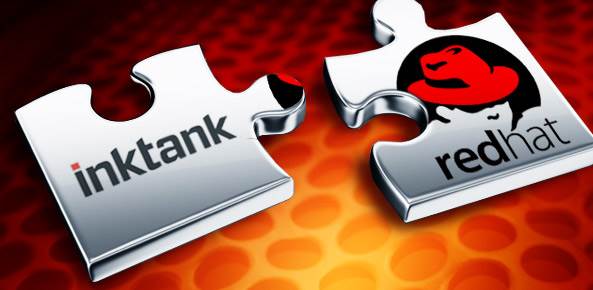![]()
Open source solution provider Red Hat just inked a deal to acquire a big name in scale-out, open source storage systems. The company snapped up Inktank for $ 175 million in cash.
Inktank is best known for its Ceph Enterprise. The company’s flagship technology offers object and blog storage software to enterprises deploying public or private clouds, including early adopters of OpenStack clouds. Ceph is a scalable, open source, software-defined storage system that runs on commodity hardware.
Red Hat figures that combining Inktank’s tech with its existing GlusterFS-based storage offering positions the firm as the go-to provider of open software-defined storage across object, block and file system storage. But is it just wishful thinking?
Brian Stevens, executive vice president and CTO at Red Hat, is betting on more than wishes. As he sees it, Inktank built a community that can be “nurtured” to make open the “de facto choice for software-defined storage.”
IDC Confirms Demand
Of course, part of the success equation depends on how quickly customers move to software-based, scale-out storage systems. But IDC’s Ashish Nadkarni, the firm’s research director for Storage Systems, seems to validate Red Hat’s thinking around the Inktank acquisition in a recent report on software-defined storage.
“Software-defined platforms will continue to grow faster than any other market segment in the file- and object-based storage market,” Nadkarni said in the report. “This growth will primarily be driven by a rich and diverse set of data-intensive use cases across multiple industries and geographies.”
Here’s what Inktank, which was founded in 2012, brings to the table. First, the company is focused on driving the widespread adoption of Ceph. Inktank’s founder and chief technology officer, Sage Weil, developed Ceph as a replacement for legacy storage systems that provides a unified solution for cloud computing environments.
Inktank’s value proposition is helping customers scale storage to the exabyte-level — and beyond — in a cost-effective way. Current customers are impressive, including Cisco, CERN and Deutsche Telekom, and its partners include Alcatel-Lucent and Dell.
What Red Hat Really Gets
We caught up with Charles King, principal analyst at Pund IT, to get his take on the Red Hat acquisition. He told us Inktank gives the company a best of breed solution for object storage and OpenStack that could be valuable going forward in the light of increasing cloud and big data deployments.
“This acquisition also allows Red Hat to be used across a variety of different storage platforms, including what you might call white box storage — what people call ‘just a bunch of disks,’ or JBOD systems, that more or less sidestep traditional storage vendors,” King said. “That’s an increasing issue in cloud.”
In fact, King is watching the cloud impact traditional storage vendors in the same way it’s impacting traditional service vendors. Specifically, cloud service providers are buying homogenous low-cost storage from original design manufacturers, then deploying it with their own software.
“In this particular case,” King concluded, “Inktank Ceph supports that type of deployment. That could increase the attractiveness of Red Hat to many up and coming and existing cloud providers.”
NewsFactor Network







